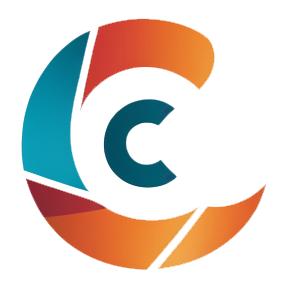TL;DR Comparison
| Archetype | Core vibe | Biggest strengths | Common pitfalls | Where they shine |
|---|---|---|---|---|
| Alpha | Commanding, front-of-room leader | Decisive, resilient, persuasive | Can steamroll others, ego risk | High-stakes leadership, crisis response, sales |
| Beta | Cooperative, dependable team player | Loyal, consistent, emotionally attuned | Avoids conflict, indecisive under pressure | Operations, partnerships, people management |
| Gamma | Analytical, principled individualist | Systems thinking, depth, ethical focus | Overcomplicates, social friction | R&D, strategy, policy, technical leadership |
| Omega | Outsider, passion-driven nonconformist | Creative, antifragile, resourceful | Disengaged from norms, inconsistent | Indie projects, maker culture, subcultures |
| Sigma | Lone-wolf, quiet competent | Self-sufficient, adaptable, calm | Detached, hard to read/coordinate | Freelancing, turnarounds, special ops roles |
Alpha: The Visible Leader
Signature traits: Charismatic, competitive, confident; naturally takes charge and frames the vision.
Pros
- Decisiveness under uncertainty—moves fast when others hesitate.
- Persuasive presence—rallies teams, investors, clients.
- High resilience—comfortable with pressure and scrutiny.
Cons
- Dominance over dialogue—can silence diverse views.
- Ego risk—defensiveness when challenged.
- Short-term bias—may favor bold moves over patient systems.
Best-fit scenarios
- Crisis leadership (tight deadlines, high ambiguity).
- Sales & fundraising where confident storytelling matters.
- Competitive environments (sports, fast-growth startups).
Growth tips
- Practice ask-before-tell in meetings.
- Build a “red-team” to stress-test decisions.
Beta: The Stabilizer
Signature traits: Cooperative, loyal, steady; values harmony and structure.
Pros
- Reliability—keeps commitments and processes humming.
- People-savvy—reads team dynamics, cultivates trust.
- Integrator mindset—turns strategy into repeatable execution.
Cons
- Conflict avoidance—hard conversations get delayed.
- Analysis paralysis—decision timelines drift.
- Under-visibility—work can go unnoticed.
Best-fit scenarios
- Operations & program management requiring consistency.
- Customer success/HR/people leadership centered on relationships.
- Partnerships where diplomacy beats bravado.
Growth tips
- Use clear decision deadlines and RACI charts.
- Reframe conflict as “care paired with clarity.”
Gamma: The Strategist
Signature traits: Analytical, principled, detail-oriented; prefers depth over spotlight.
Pros
- Systems thinking—sees second-order effects and risks.
- Mastery drive—pursues expertise and quality.
- Ethical compass—anchors choices in principles.
Cons
- Over-engineering—perfect becomes the enemy of done.
- Social friction—blunt critiques can alienate allies.
- Change resistance—attachment to “the correct way.”
Best-fit scenarios
- R&D, data science, policy/infosec where rigor rules.
- Product strategy (roadmaps, tradeoffs, metrics).
- Compliance & risk in regulated environments.
Growth tips
- Time-box exploration; ship MVPs, iterate.
- Pair with a communicator to translate insights.
Omega: The Outlier Creator
Signature traits: Unbothered by status games; follows niche interests with extreme focus.
Pros
- Originality—unconventional ideas and aesthetics.
- Antifragility—less swayed by trends and approval.
- DIY resourcefulness—learns by building.
Cons
- Inconsistency—motivation can be project-specific.
- Isolation—limited networks slow momentum.
- Practical blind spots—neglects boring but vital tasks.
Best-fit scenarios
- Indie making (art, music, games, open source).
- Early concepting where novelty is prized.
- Subculture/community roles that reward uniqueness.
Growth tips
- Add lightweight routines (weekly “boring hour”).
- Create a small feedback circle to avoid tunnel vision.
Sigma: The Quiet Operator
Signature traits: Self-directed, calm, selectively social; comfortable outside hierarchies.
Pros
- Autonomy & adaptability—drops into chaos and delivers.
- Low-ego competence—results over recognition.
- Boundary clarity—rarely distracted by status politics.
Cons
- Detachment—others may feel shut out.
- Coordination tax—harder to align on shared timelines.
- Succession risk—knowledge lives in one head.
Best-fit scenarios
- Freelance/consulting, special projects, turnarounds.
- Field roles (audits, site recoveries, incident response).
- Small elite teams where trust and output matter most.
Growth tips
- Document as you go; narrate decisions briefly.
- Schedule predictable check-ins to reduce ambiguity.
How to Use These Archetypes Productively
- Treat them as modes, not identities. You can dial up Alpha decisiveness in a crisis and Beta steadiness in maintenance phases.
- Build complementary teams. Pair Alpha vision with Beta operations, Gamma strategy, Sigma execution, and Omega originality.
- Watch for overuse injuries. Strengths become liabilities when overextended (e.g., Alpha speed → reckless, Gamma rigor → paralysis).
- Iterate your default. Notice where your current context rewards a different mode and practice shifting intentionally.
Quick Scenarios
- Company fire drill (site outage): Alpha leads comms; Sigma isolates the issue; Gamma checks second-order risks; Beta coordinates stakeholders; Omega proposes a novel workaround.
- New product discovery: Omega sparks unconventional concepts; Gamma validates feasibility; Beta organizes research ops; Sigma prototypes; Alpha secures resources.
- Scale-up phase: Alpha sets bold targets; Beta matures processes; Gamma hardens architecture; Sigma clears blockers; Omega polishes brand and community vibe.
